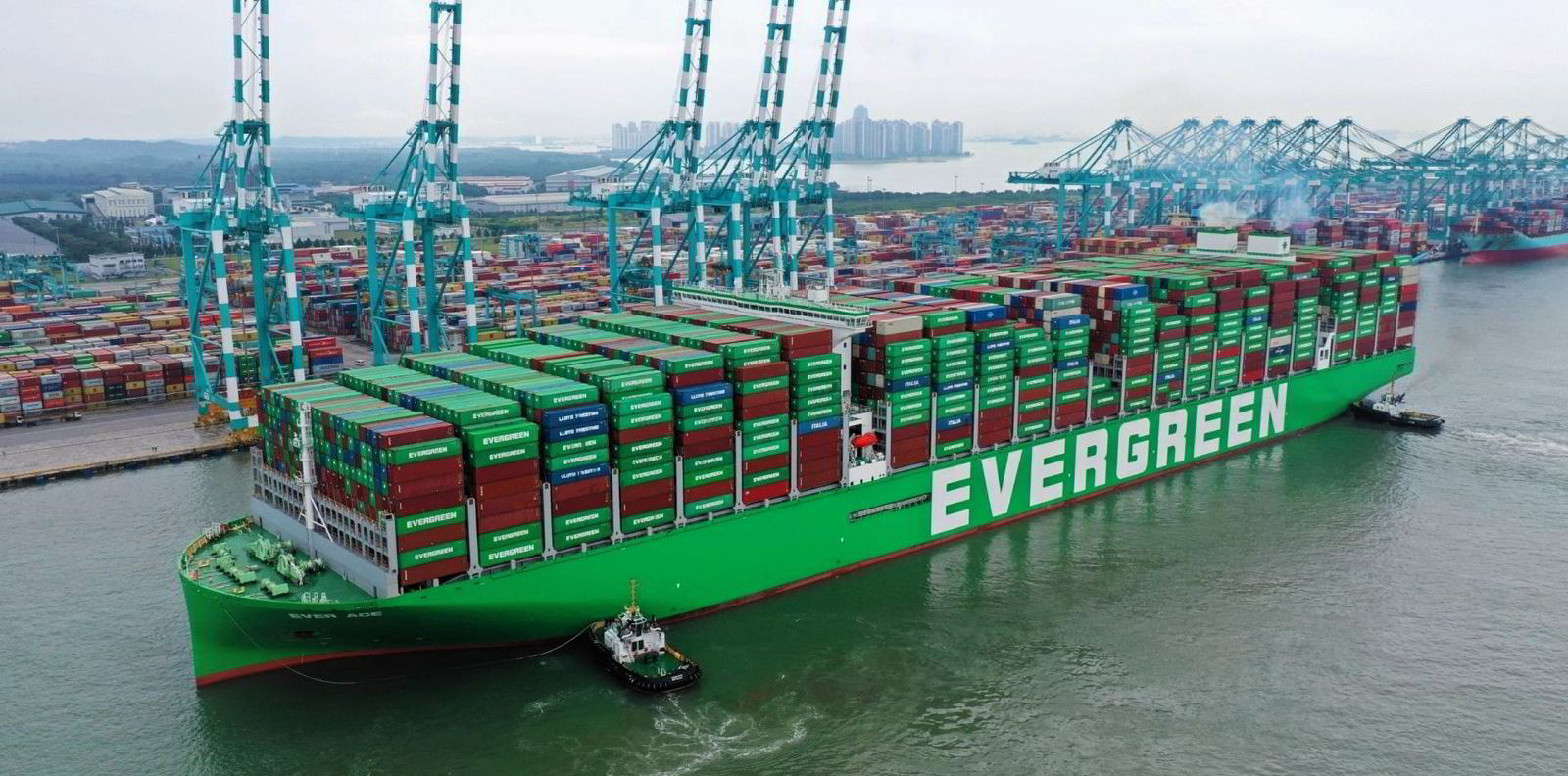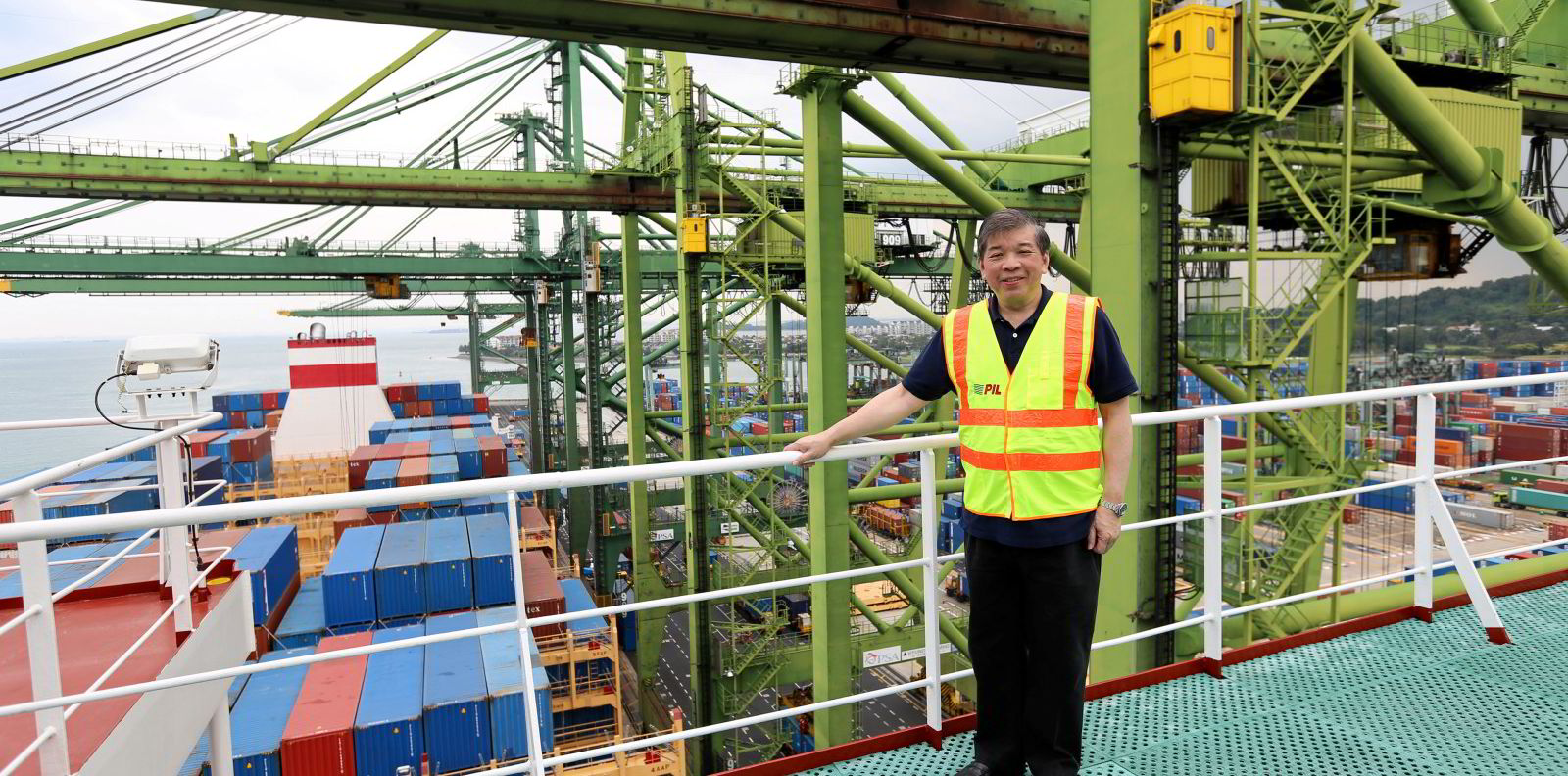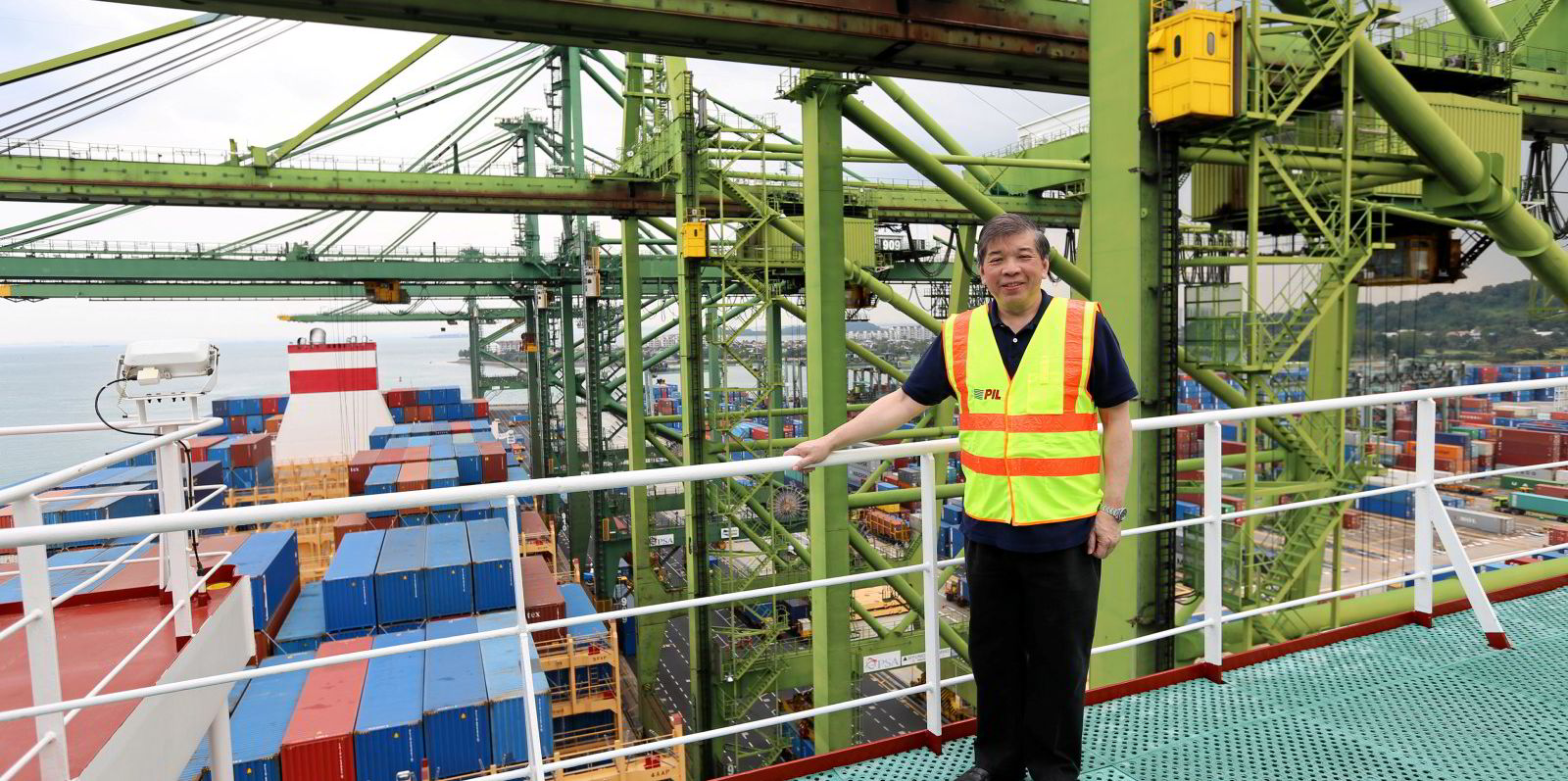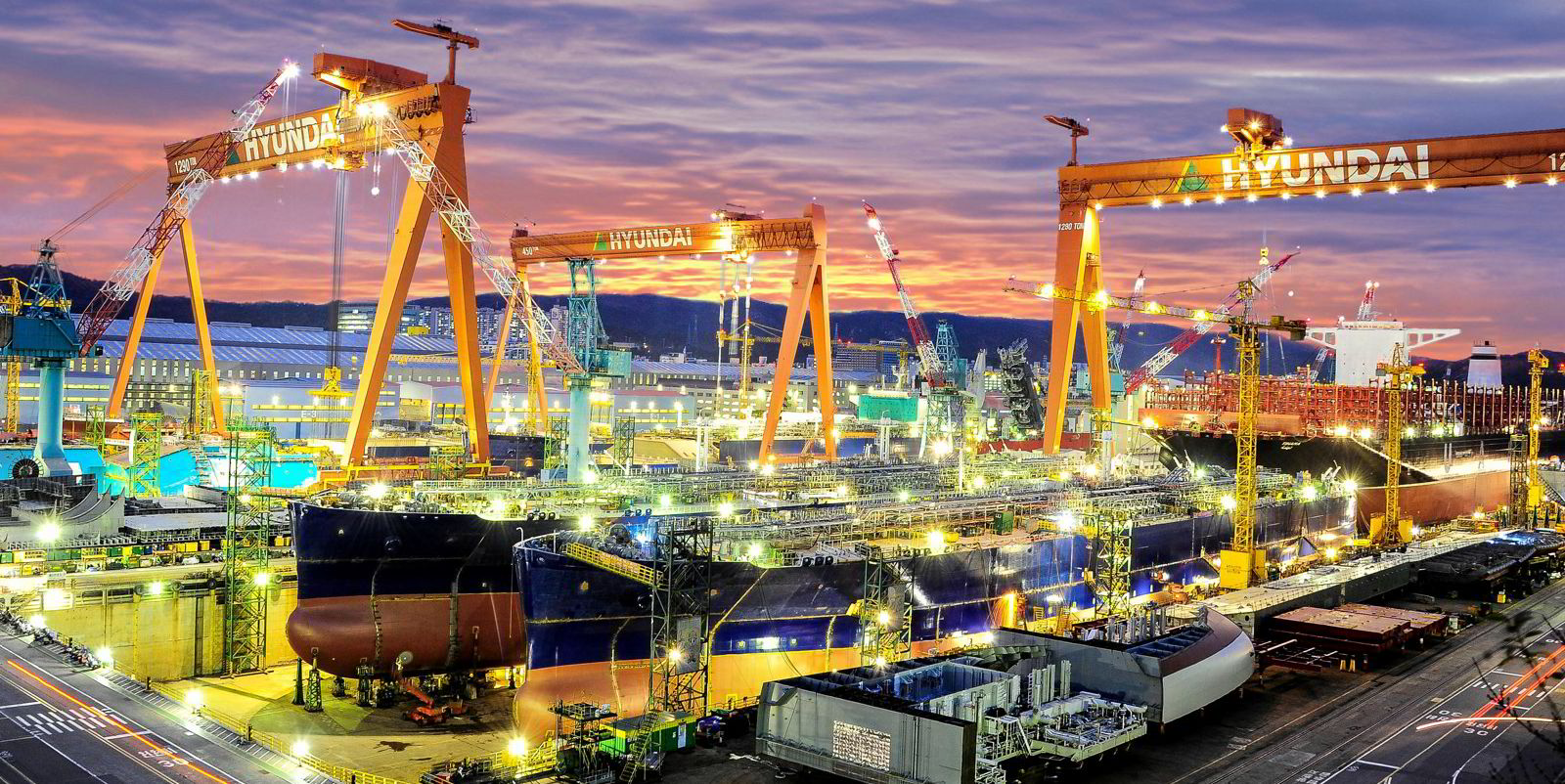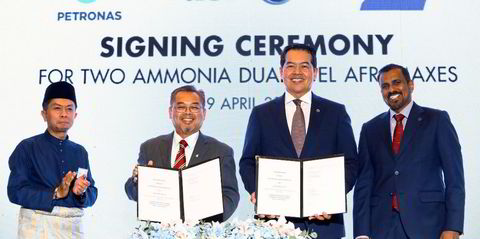Newbuildings ordered by the top 10 Asian liner players this year account for 72.6% of the total volume of new vessels booked by the world’s leading 30 container ship companies.
Asian boxship companies ordered 236 vessels with a capacity of 1.81m teu to the end of March, according to Clarksons Research.
The volume of newbuildings is believed to have exceeded all previous records, and the number is set to rise as liner giants such as Yang Ming Marine Transport, HMM and Wan Hai Lines are understood to have started newbuilding discussions with Asian shipyards.
It is easy to understand why Asian liner companies are ordering new ships. They are flush with cash from the exceptional earnings made in the booming container ship market and are using their profits to invest in newbuildings as part of fleet renewal and expansion programmes.
Singapore’s Pacific International Lines (PIL) ordered four 14,000-teu LNG dual-fuel newbuildings at China’s Jiangnan Shipyard for about $640m.
Serving key markets
The newbuilding contract was PIL’s first in seven years and followed a financial restructuring in which Singapore’s sovereign wealth fund — Temasek Holdings — buy a majority stake in the previously privately owned company.
PIL said the newbuildings are part of a plan to continue optimising its fleet to serve customers in key markets.
The neo-panamaxes are also described as being aligned with the company’s commitment to reducing carbon emissions. To be fitted with engines that can be adjusted to use ammonia as fuel, they are scheduled for delivery from the second half of 2024 and the first six months of 2025.
Japanese-owned liner operator Ocean Network Express (ONE) is set to join the shipowning league with an order for 10 conventionally fuelled but LNG-ready neo-panamax container ships.
The Singapore-based liner giant — formed through the merger of the Japanese liner operations of K Line, Mitsui OSK Lines and NYK Line — currently operates chartered ships, but it is contracting with Japan’s Imabari Shipbuilding and South Korea’s Hyundai Heavy Industries to build five vessels each at more than $160m per ship.
ONE chief executive Jeremy Nixon said his company plans to invest $20bn in assets, including ships to replace older vessels so that it can meet its environmental goals.
Taiwan’s Evergreen Marine Corp is using part of the $8.35bn profit it made last year to order new ships as well as pay down debt, and issue cash dividends and bonuses to shareholders and employees.
With 57 container ships of between 1,800 teu and 24,000 teu on order, according to VesselsValue data, Evergreen has the largest orderbook among its Asian liner peers.
The company most recently ordered one more scrubber-fitted, 24,000-teu ultra-large container ship at Hudong-Zhonghua Shipbuilding (Group) and took over two similar-sized newbuildings that were ordered by its subsidiary Evergreen Marine Asia at the same yard.
Cosco Shipping Holdings — Asia’s largest liner company — is expecting to post a full-year profit of CNY 89.3bn ($14.1bn) for 2021, and, together with Hong Kong-based subsidiary OOCL, has an orderbook of 32 container ships.
These newbuildings represent about 28% of its existing fleet by capacity. They range between 14,000 teu and 23,000 teu, and are worth close to $5.47bn.
Cosco has taken a conservative approach by ordering ships powered by conventional marine fuel, mirroring the stance of most Asian liner operators except for PIL.
This is in marked contrast to European competitors such as Mediterranean Shipping Co (MSC), AP Moller-Maersk, CMA CGM and Hapag-Lloyd, which have opted for dual-fuel vessels.
Maersk even has a dozen 16,000-teu and two 2,200-teu dual-fuel vessels that can run on methanol and conventional fuels. They are due for delivery between 2023 and 2025.
MSC, CMA CGM and Hapag-Lloyd have shown a preference for LNG dual-fuel engine systems as they await developments in the alternative fuels market.
Asian shipbuilding players believe that conservatism and lack of experience in operating dual-fuel ships are the reasons behind Asian liner companies sticking to conventional marine fuel.
They said there are also concerns among Asian shipowners that the industry is facing a shortage of crew members who are qualified to work on vessels that use LNG and other alternative fuels.
